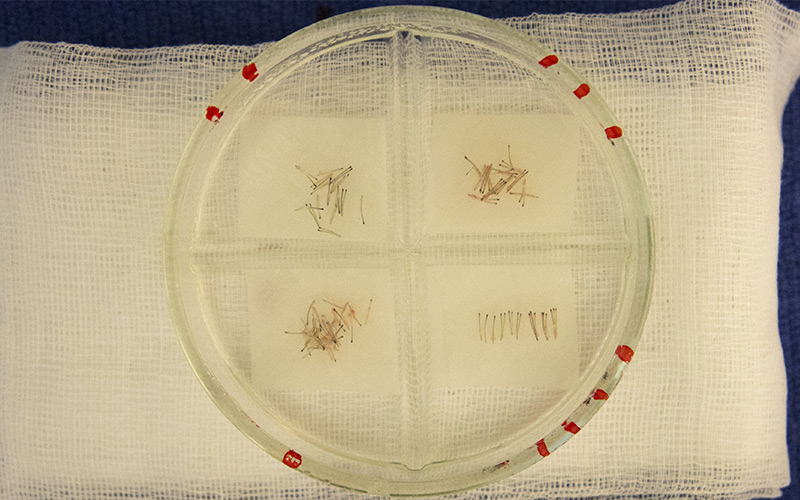Overview of the different FUE (Follicular Unit Extraction) Hair Transplant possibilities
During the so-called FUE procedure, hair is being removed one by one from the “safe zone” – the so-called “donor zone”. The donor hair is resistant to the hormone dihydrotestosterone (DHT) that causes hair loss. The follicles are then carefully prepared and treated before being placed back into the scalp.
Even if it is removed from the safe areas and placed where hair was lost due to DHT, the follicle will remain resistant to its effects and be permanent hair.
What is a Follicular Unit?
A follicular unit is the term that describes the natural groupings of hair found on every human scalp. Each follicular unit will have one to four hairs each.
How is FUE Performed?
Dr. Lupanzula is renown for his skilful manual FUE and his “doctor only” approach, where you can be sure that only the doctor himself will extract the follicular units in the donor area.
The follicular units are being removed after the administration of local anaesthesia.
A knife cylinder punch of 0.8 to 0.9 mm in diameter is used to extract each follicular unit from the safe area in the back and on the sides of the head.
Our technicians then carefully prepare the extracted units and check them for possible damages. The intact follicular units are then reimplanted into prepared sites in the recipient area of the scalp.
In contrast to the so-called STRIP procedure, follicular units are being harvested in a pattern that makes the detection after the procedure almost impossible, seeing that the holes are tiny and extraction is scattered. Thus, scarring is limited and almost invisible to the eye.
FUE benefits
- as soon as 10 days after surgery the donor area is virtually undetectable
- minimal, almost invisible scarring
- less painful than FUT
- fast recovery
FUE disadvantages
- labour intensive
- higher cost



